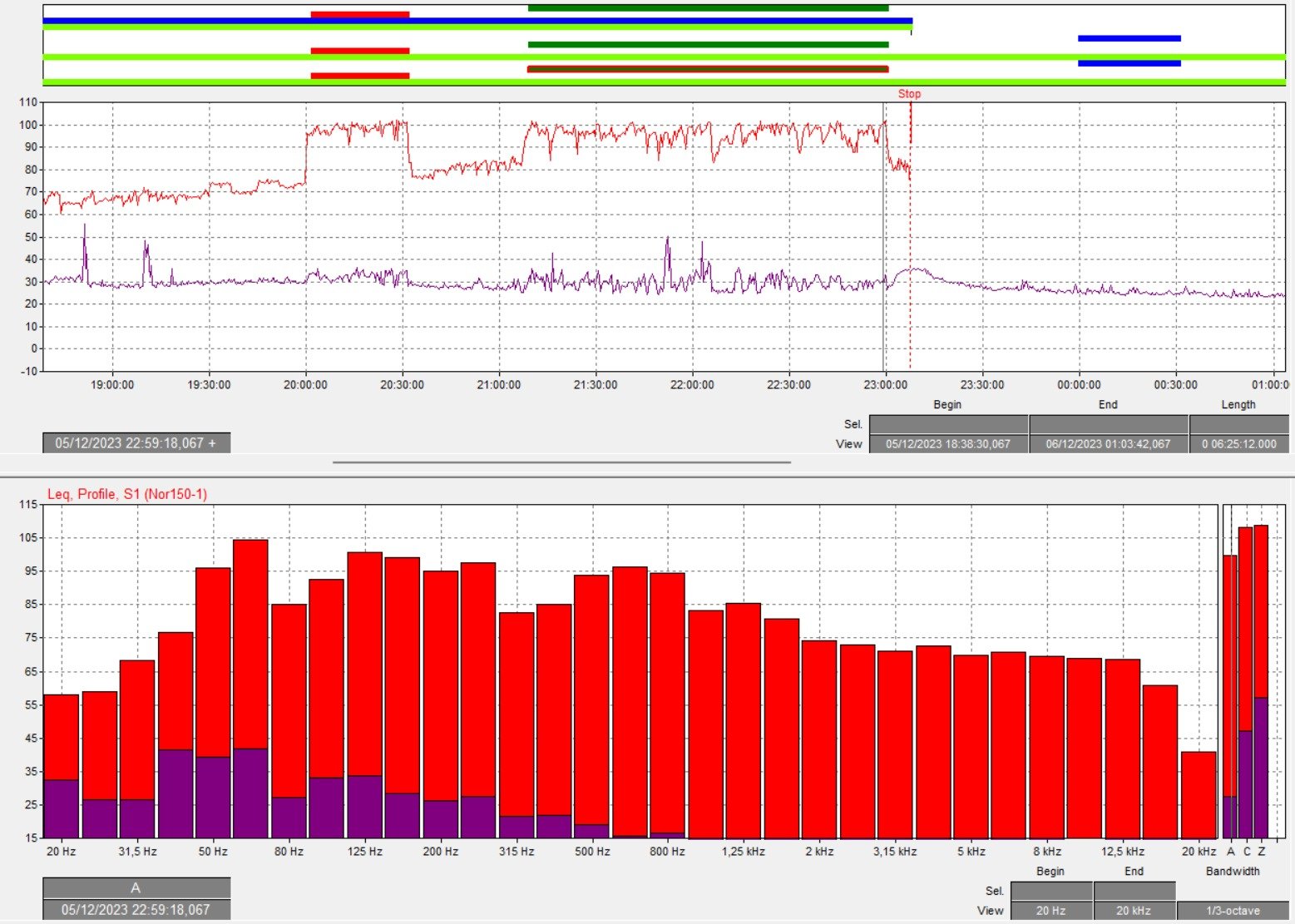
ACOUSTIC IMPACT ASSESSMENT & SOUND MANAGEMENT
The acoustic impact of premises and equipment is a growing concern for operators and local residents alike.
An EINS noise impact assessment plays a crucial role in the management and prevention of noise pollution.
WHAT IS AN EINS, A NOISE IMPACT STUDY?
DEFINITION AND OBJECTIVES
Its main objective is to identify noise sources, assess their impact on surrounding areas and propose appropriate mitigation measures.
A complete noise impact assessment generally consists of two documents:
Noise impact study report with diagnosis and recommendations.
The certificate of conformity with the measures taken to control the noise level.
WHEN IS IT NEEDED?
It is essential for establishments that receive the public and play amplified music on a regular basis.
It is also required for the opening of new establishments, major renovations or changes to sound equipment.
Finally, it is requested in response to complaints from local residents and for the protection of the public.
WHY CARRY OUT AN ACOUSTIC IMPACT STUDY?
COMPLIANCE WITH NOISE STANDARDS AND REGULATIONS
The impact study ensures compliance with noise standards and regulations in the hospitality industry. This helps operators to avoid sanctions and litigation linked to non-compliance with acoustic standards.
-
Provisions applicable to activities involving the broadcasting of amplified sound at high noise levels :
"Noise generated by activities involving the broadcasting of amplified sound at high sound levels in places open to the public or receiving the public must not, by its duration, repetition or intensity, be detrimental to the peace or health of the neighborhood."
"The operator of the site [...] must comply with the following requirements:
- Do not exceed, at any time and in any place accessible to the public, the equivalent continuous sound pressure levels of 102dB(A) over 15min and 118dB(C) over 15min.
"The study of the impact of noise pollution [...] may, in particular, conclude that it is necessary to install sound pressure limiters in compliance with the conditions defined by the decree mentioned in article R. 571-26. This study must be updated in the event of any modification to the layout of the premises, modification to the activities, or modification to the sound diffusion system, not provided for in the initial study."
Information from the Préfecture de Police
Decree 2017-1244 of August 7, 2017 and articles R1336-1 to R1336-3 of the Dispositions applicables aux activités impliquant la diffusion de sons amplifiés à des niveaux sonores élevés section of the Public Health Code.
Decree no. 2017-1244 of August 7, 2017 and articles R571-25 to R571-28 of the sub-section Places open to the public or receiving the public hosting activities involving the broadcasting of amplified sound at high sound levels of the Environmental Code.
Order of April 17, 2023 relative à la prévention des risques liés aux bruits et aux sons amplifiés pris en application des articles R.1336-1 et R. 1336-16 du code de la santé publique et des articles R.571-25 à R. 571-27 du code de l'environnement.
Decree no. 2006-1099 of August 31, 2006 relating to the fight against neighborhood noise and amending the public health code.
NFS 31-010 : Characterization and measurement of environmental noise, assessment method
OPTIMIZING THE CUSTOMER EXPERIENCE
By taking measures to control noise levels, an acoustic impact study helps optimize the customer experience. It also helps protect the public and employees from excessive noise levels.
OUR MISSION
COMMITMENT AND EXPERTISE
Our team of acoustical engineers can support you throughout your project, whatever its complexity. From simple bars to multi-purpose rooms, we can :
Diagnose your location and propose constructive solutions
Install and maintain control equipment
Draw up an official report for transmission to the authorities
Assume the role of mediator to defend your interests.
Contact us for a quote
STAGES OF A NOISE IMPACT STUDY
1 - SITE-SPECIFIC DATA COLLECTION
Gathering site-specific data is the first step in a noise impact study.
This involves characterizing the interior of the venue, the sound system, hours of operation, contiguous areas and impacted dwellings.
2 - MEASUREMENTS
Once the data has been collected, in-situ measurements are carried out. The public address system is pushed to its maximum level to characterize the power emitted inside the establishment.
At the same time, measurements are taken in the immediate vicinity to determine the level of acoustic emergence. Finally, it is necessary to measure the residual noise level in the vicinity, at night and when the site is not in use.
3 - ANALYSIS
Once the measurements have been taken, an assessment of the impact on the noise environment is carried out.
This involves comparing the sound levels measured with current standards and regulations, such as overall emergence in dB(A) and by octave band.
The aim is to ensure that the noise level respects the limits inside the establishment and does not exceed the regulatory emergence values in neighboring premises.
4 - RECOMMENDATIONS
Finally, appropriate mitigation measures are proposed to reduce noise levels and minimize nuisance to local residents. These may include the use of soundproofing materials and the installation of a sound pressure limiter.
These detailed recommendations are provided in the final impact study report.
5 - INSTALLATION AND SETTINGS
Our team of acoustic engineers can help you choose the right equipment, place it where you need it, and set up your audio chain from source to speakers.
A certificate of conformity will then be sent to you to complete the file to be sent to the prefecture.
TOOLS USED IN A NOISE IMPACT STUDY
MEASURING INSTRUMENTS
We are equipped with a certified Class 1 measuring chain, guaranteeing precision and reliability in the face of the authorities.
STANDARDS AND REGULATIONS
A thorough knowledge of noise standards and regulations is essential to carry out a relevant acoustic impact study. Compliance with these standards and regulations is essential to ensure the soundproofing of interior spaces, the limitation of noise levels emitted and respect for neighbors.
RESTAURANTS - CLUBS - CONCERT HALLS - FESTIVALS






